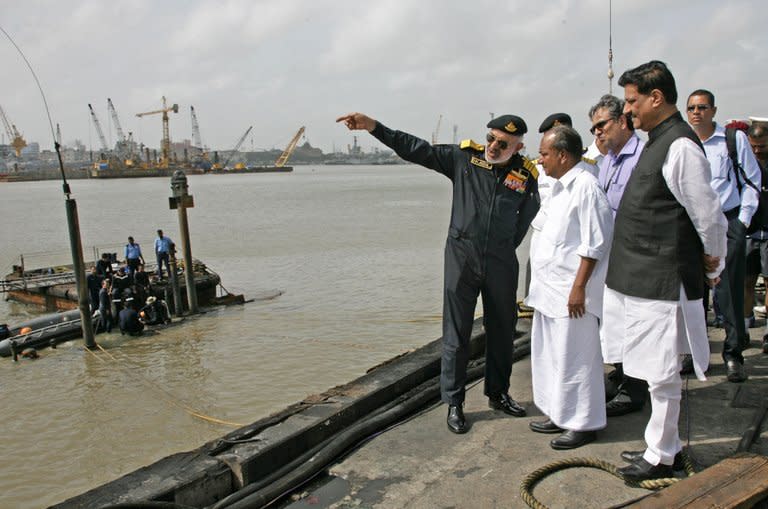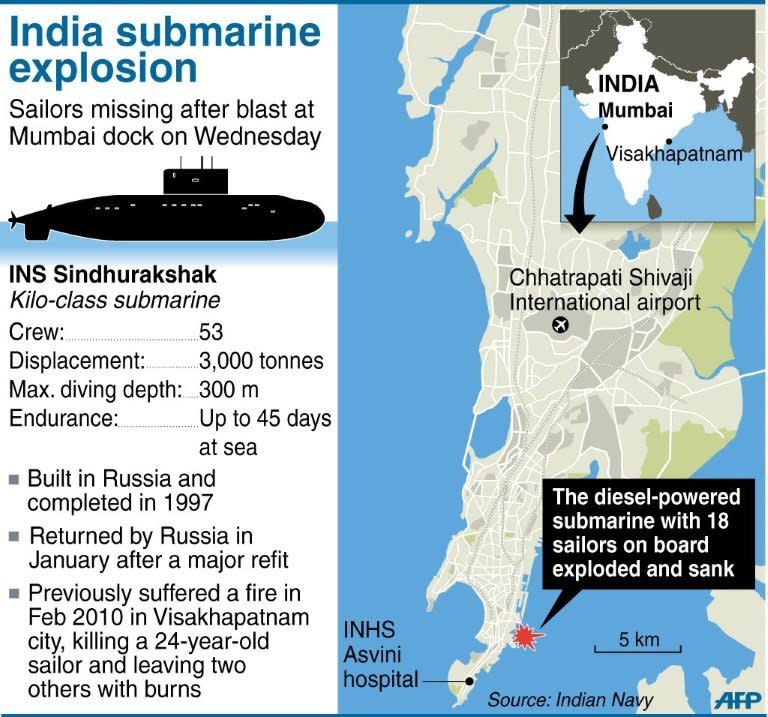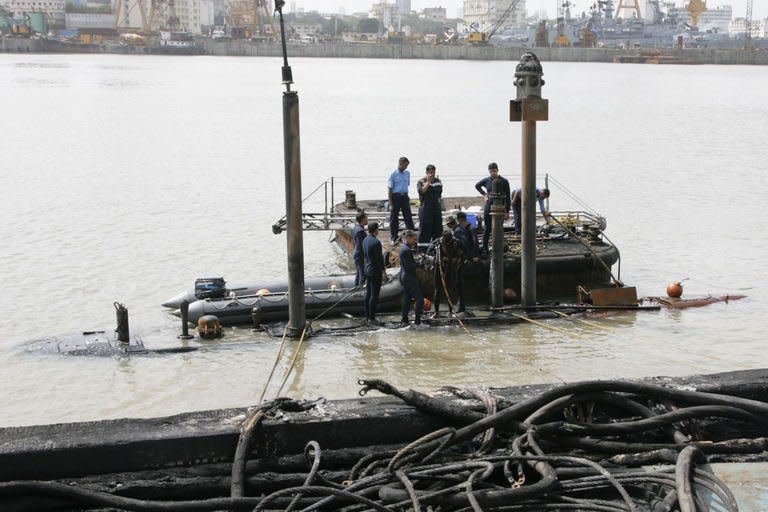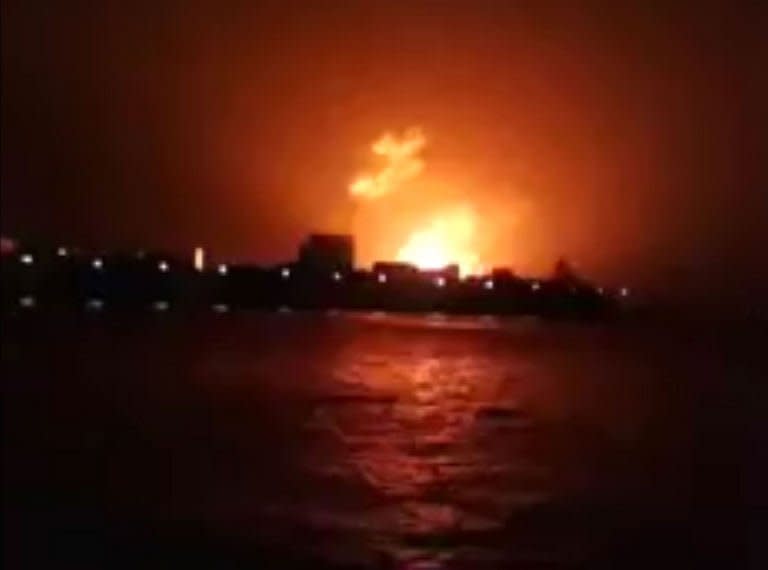India works to refloat sub as PM laments deadly blast
Indian divers and engineers struggled Thursday to refloat a submarine that exploded with 18 crewmen on board, as the prime minister voiced "deep regret" at the blast which is feared to have left no survivors. The fully armed INS Sindhurakshak, returned by its original maker Russia earlier this year after a major refit, sank after it was engulfed by a fireball that lit up the night sky at a Mumbai dock early on Wednesday. The disaster, considered the navy's worst since the sinking of a frigate by a Pakistani submarine in 1971, has cast a long shadow over India's defence capabilities as it seeks to counter a military build-up by increasingly assertive China. Divers had opened the main hatch and heavy-duty pumps were being used to expel seawater inside the diesel-powered vessel, which lay mostly submerged in shallow water, officials said. Visibility was poor for the divers inside the vessel due to the muddy water which had gushed inside the submarine when the explosion occurred. "Efforts continue round-the-clock to ascertain the status of the 18 trapped personnel," navy spokesman Narendrakumar Vispute told reporters in Mumbai. But hopes were dim for their survival. None of the missing sailors had been sighted yet, the spokesman said. Three sailors, who were on the outside of the sub managed to leap to safety when the vessel exploded, igniting munitions aboard. "Diving efforts are hampered by poor visibility inside the submarine, which is filled with water, extremely restricted spaces and displacement of most equipment from their original location," he added. The intense heat of the explosion had melted interior parts of the hull and damaged hatches, preventing access to compartments, he said. Separately, a top defence ministry official who asked not to be identified told AFP the vessel had suffered "very, very extensive damage". Prime Minister Manmohan Singh, addressing the nation in the traditional Independence Day speech at the Red Fort monument in Delhi, voiced sorrow at the blast, which marked a major setback for the rapidly modernising navy. "We have deep regret that we lost the submarine INS Sindhurakshak in an accident. Eighteen brave sailors are feared to have been martyred," he said. "The accident is all the more painful because the navy had recently achieved two major successes in the form of its first nuclear submarine, INS Arihant, and the aircraft carrier, INS Vikrant," Singh said. In recent days India launched its first domestically produced aircraft carrier and began sea trials for the first Indian-made nuclear submarine, trumpeted as a "giant stride" for the country. Newspapers lamented the loss of the submarine on their front pages. "Navy Catastrophe", said the Indian Express in a headline. "Defender of the seas meets fiery end," said The Hindustan Times. The Times of India called it the country's "worst peacetime disaster". The world's biggest democracy has been expanding its armed forces to upgrade its mostly Soviet-era weaponry and respond to what many in India see as a growing threat from regional rival China. Navy chief D.K. Joshi said Wednesday no sign of life had been detected since the submarine was engulfed by flames. "While we hope for the best, we have to prepare for the worst," he said, adding some crew might have found air pockets but "the indicators are negative". Amateur video footage showed a fireball in the forward section of the Sindhurakshak, where torpedoes and missiles were stored as well as battery units. An enquiry board will probe the cause and look at the possibility of sabotage, but "the indicators at this point of time do not support that theory", Joshi said. The board is due to report within a month. In February 2010 the submarine suffered a fire while docked in Visakhapatnam city in southern India, killing a 24-year-old sailor. The Indian navy has 15 submarines, but just seven to nine are operational at any one time because of repairs and refitting. Analysts say that is too few to properly guard India's long coastline. The disaster had echoes of a tragedy in Russia in 2000 when the Kursk nuclear submarine sank in the Barents Sea with the loss of all 118 crew on board. Russia is still the biggest military supplier to India, but relations have been strained recently by major delays and cost overruns with a refurbished aircraft carrier, the INS Vikramaditya.





